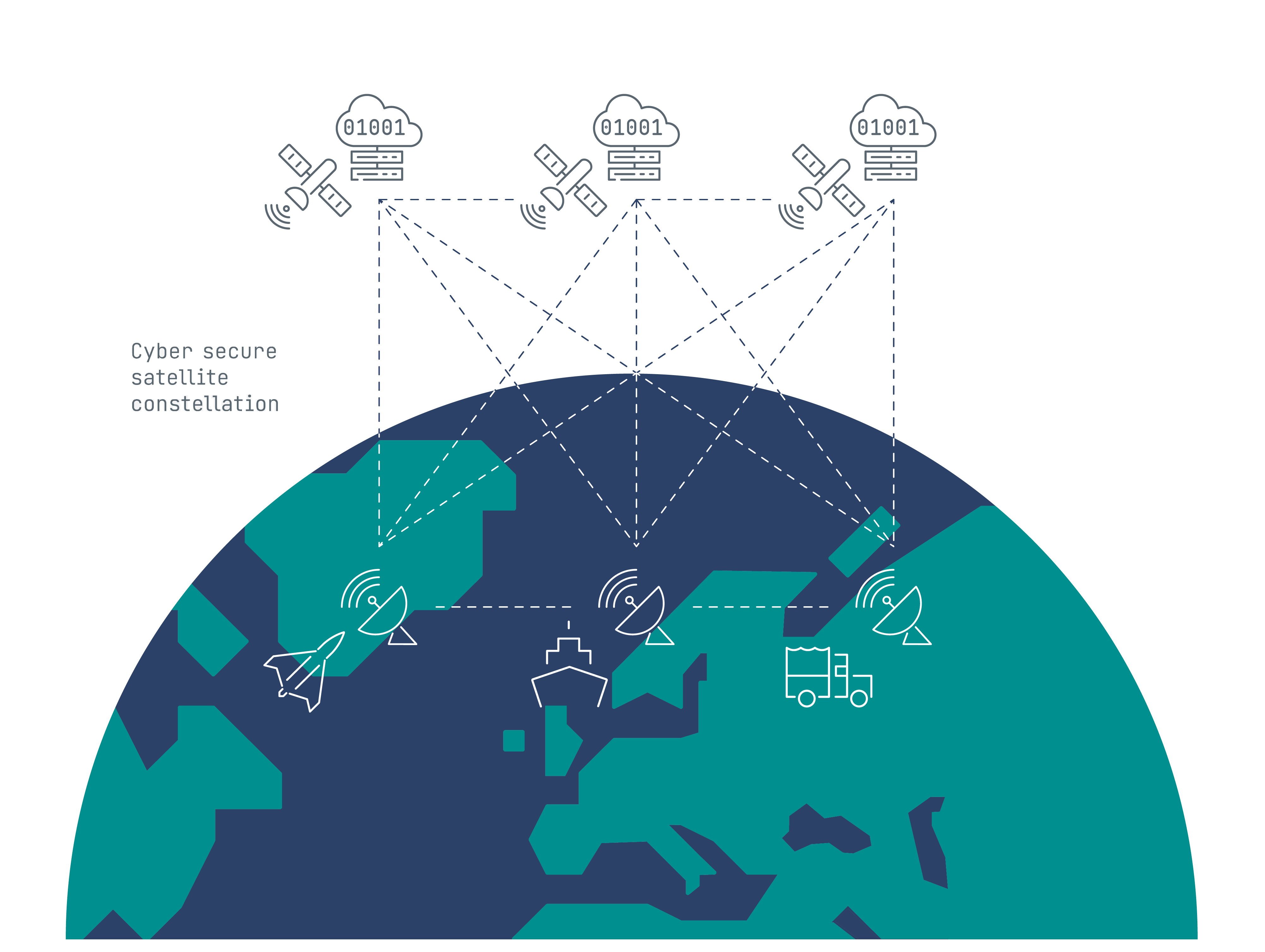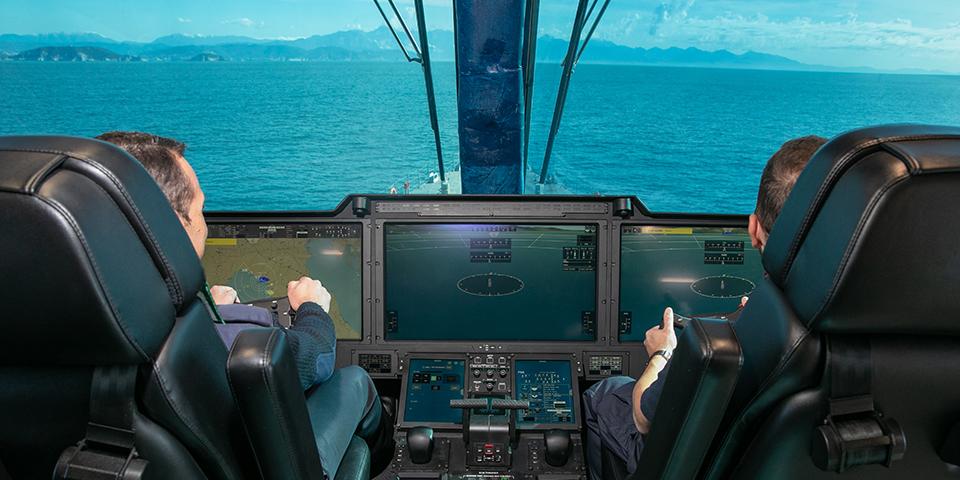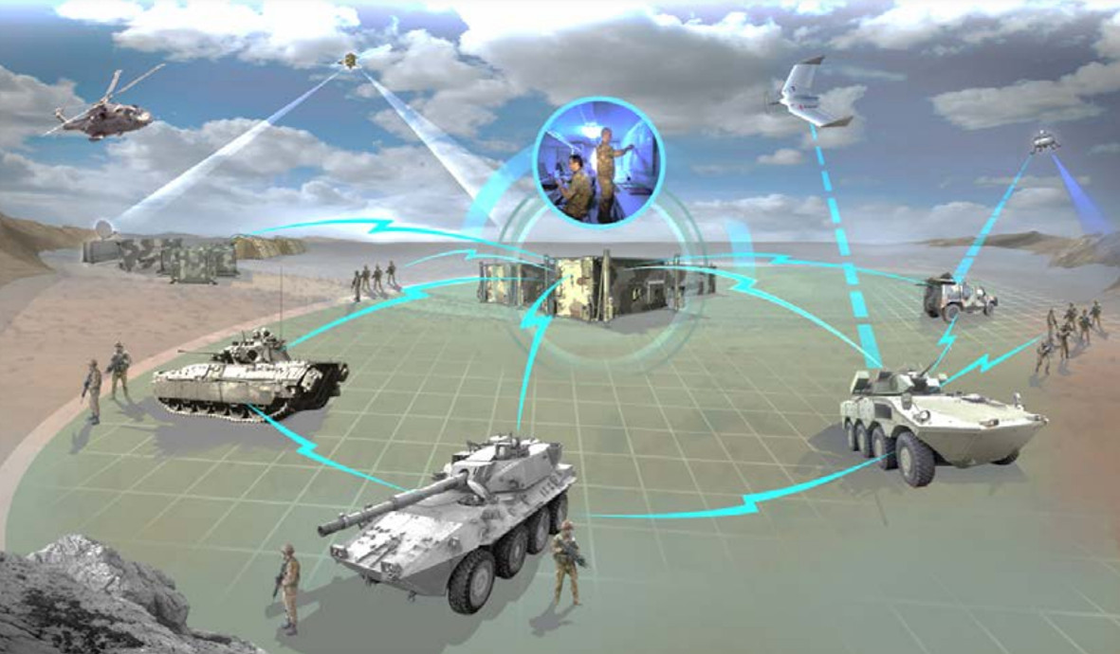AW249, the new helicopter for the operational scenarios of the future
The AW249 was specifically designed to operate in a multi-domain scenario, characterised by high complexity and high threat profile, which requires the ability to integrate information from all domains (land, sea, air, space, cyber) and to collaborate with other platforms. The helicopter has been equipped, by design, with a series of "native" capabilities, present on the machines that will be delivered to the Italian Army starting from 2027. In particular: computing capacity and power, connectivity and interconnection, UAV management, extensive potential for technological updating, precision in target acquisition and resilience to cyber-attacks. Complete and accurate situational awareness is guaranteed by a series of devices and sensors - LIDAR technology, IR sensor and microwave radar, while the interaction between artificial intelligence and advanced computing capabilities allows parametres such as height, speed, and presence of obstacles, thus guaranteeing the helicopter the possibility of identifying the safest routes to follow. Finally, integration with the drone is of strategic importance, as the latter, thanks to its advanced position, can extend the intelligence capacity of the helicopter. This allows formations made up of AW249s and their unmanned wingmen to optimize and make operations more effective.

Mock up of the AW249 on display at Eurosatory – Paris
GCAP, the sixth generation “system of systems”.
The GCAP (Global Combat Air Programme) is an international collaboration programme involving Italy, the United Kingdom and Japan with the shared ambition of developing a new generation air system by 2035. Leonardo is a strategic partner together with the British BAE Systems and Japanese Mitsubishi Heavy Industries. The project involves the development of an integrated air combat system, in which the main platform, equipped with a human pilot, is at the centre of a network of remotely piloted aircraft with different roles and tasks, from reconnaissance to combat support, controlled from the central node and inserted into an ecosystem capable of multiplying the effectiveness of the system itself. Through a technological capacity, digital in all its components - a command and control and communications infrastructure, based on artificial intelligence and supercomputing, combat cloud architecture and cyber datalinks that are resilient, self-adaptable and super-fast in the transfer of high volumes of data - the system will be able to operate in the multi-domain dimension, synchronising operations with other military devices on land, sea, air and space and allowing decision makers to have a complete image of the operational area and multiply response options as events change. Leonardo will make its skills available to the project in all the technological areas involved, leveraging the most advanced digital technologies such as artificial intelligence, advanced computing, digital twins, and making use of its systems and integration capabilities.

GCAP – Graphical representation
MILSCA, first space cloud system for Defense
MILSCA (Military Space Cloud Architecture), assigned to Leonardo by the Italian Ministry of Defence, is a high tech, multi-domain project that leverages the company's capabilities in data acquisition, management and cybersecurity, artificial intelligence, and supercomputing. It involves the development of a military space cloud architecture, the first in Europe: a constellation of satellites orbiting the Earth to provide the Government and the Armed Forces with high-performance computing and storage capacity directly in space. The system, designed with integrated cybersecurity models, will guarantee users speed and flexibility in accessing and processing strategic data - communication, Earth observation, navigation - generated on Earth and in space on board each satellite. The space cloud will reduce data processing times, processed directly in orbit through the capabilities of the davinci-1 supercomputer, thus providing real-time information and facilitating multi-domain and multi-nation operations.

Space cloud – Graphical representation
ECYSAP, cyber situational awareness to defend Europe
Cyber security at European level is one of the pillars of European defence and strategic autonomy. For this reason, the European Union has co-financed the ECYSAP (European Cyber Situational Awareness Platform) project which aims to develop and implement innovative theoretical foundations, research methods and prototypes, integrated into a European operational platform that enables cyber situational awareness in real time. The aim of the project is to provide commanders of military missions with an accurate image of cyber risks both in the planning phase and during the execution of missions and to assist them in decisions to be made in all physical domains - land, sea, air, space - and in the specific area of cyber-attacks. Leonardo's contribution to the project is focused on the Course of Action component, i.e., on the identification and execution of actions to mitigate cyber risk.

Global Cybersec Centre
ATHENA, the “digital brain” of the ship platform
The multi-domain challenge is essential for the Naval Forces which must integrate with other Armed Forces at a national and multi-national level. ATHENA is Leonardo's Combat Management System recognised as an international benchmark and now in its MK2 version on board Multi-purpose Offshore Patrol Vessels. It was conceived, right from the design phase, as scalable upwards, allowing an expansion of performance to adapt to even more complex naval units or more disruptive technologies, such as artificial intelligence and supercomputing. It will be possible, for example, to integrate a piece of ad hoc software for multi-domain operations, synchronising naval activities with those underway in other areas of land, space, and air, then representing the overall scenario on a dedicated tactical table to speed up the decision-making process. The development of the ATHENA MK2/U, intended for the new submarines of the Italian Navy, started precisely from this system. Also making use of artificial intelligence algorithms, the new system will offer operators a complete tactical picture management and situational awareness of the surrounding operational scenario, allowing rapid mission planning and execution, as well as advanced interoperability, data recording and analysis and image recognition of the underwater and surface environment.

ATHENA CMS on board the PPA (Multipurpose Offshore Patrol Vessel)







